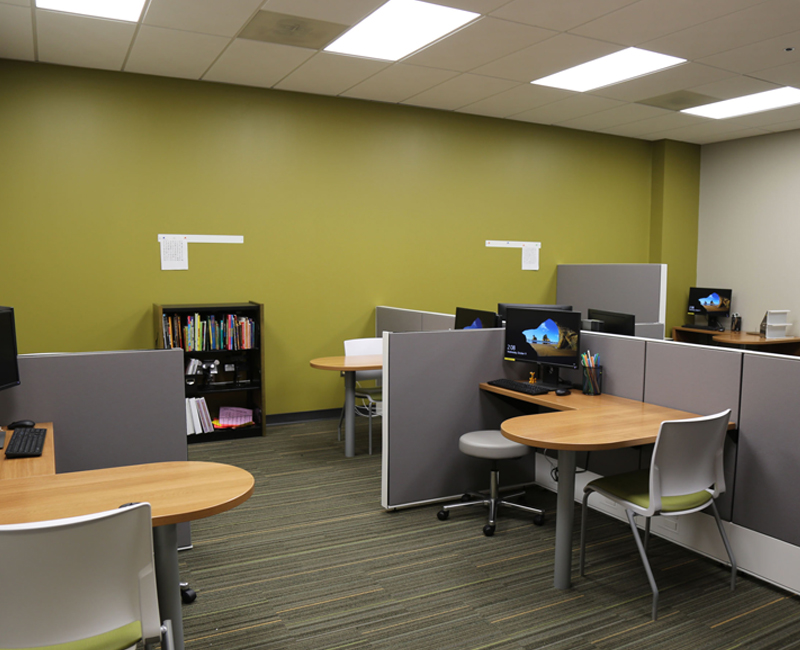When the waiting list for an appointment at the Vision Therapy Clinic at UAB Eye Care reached nearly 50 patients, it was clear that more space was needed, recalls Kristine Hopkins, O.D., M.S.P.H., associate professor at the UAB School of Optometry.
The clinical service had outgrown the space used to provide weekly care for about 36 patients—mostly children—with conditions that affect eye teaming, visual tracking and focusing.
After a few months of discussion and planning, the Vision Therapy Clinic moved to a newly renovated space within UAB Eye Care, which is the School of Optometry’s clinical operation. Now, Hopkins, Tamara Oechslin, O.D., Ph.D., assistant professor, and a team of third-year optometry students can see up to 57 patients a week—a 63 percent increase.
“Now we actually have some immediate openings for therapy,” says Hopkins, who is the clinic’s chief of services.
The Vision Therapy Clinic provides therapy services to patients with conditions like convergence insufficiency, accommodative insufficiency, intermittent exotropia and ocular motor dysfunction on Mondays, Tuesdays and Wednesdays from 3 pm to 6 pm. Vision therapy involves a combination of weekly in-office visits and home eye exercises to retrain the visual system to work more efficiently and accurately to relieve symptoms.
The renovation for the new space began in May 2017 and was completed in August 2017. Now, there is more room to work with patients, and more patients can be seen, Hopkins says.
When Hopkins joined the School of Optometry in 1998 as an assistant professor, there were no vision therapy services offered to patients.
“When I started, it was my goal to bring therapy services to our patients and to give [School of Optometry] students an education that would allow them to provide this service to their patients,” she says.
The clinic began with a few patients being worked into Hopkins’ clinic schedule.
“As the demand for therapy increased, we were able to set aside more clinic time for therapy,” she says.
In 1999, the Vision Therapy Clinic provided approximately 150 vision therapy visits to its patients. By 2012, the clinic provided approximately 1,500 vision therapy visits each year.
“Since moving to the new space in August, the Vision Therapy Clinic now has the capacity for up to 2,500 therapy visits per year, and third-year optometry students with an interest in binocular vision can elect to have two therapy rotations during their third professional year,” Hopkins says.
Future plans for the clinic include expanding services offered by the Vision Therapy Clinic.
“With the addition of Dr. Tamara Oechslin to our clinical staff, we hope to begin working with kids with visual processing disorders,” says Hopkins.
She also expects to see a continued increase in patients with concussion-related symptoms Within the last few years, more patients with concussions have been sent to the Vision Therapy Clinic, thanks to a rise in recognizing concussions and the School of Optometry’s strong partnership with Children’s of Alabama, Hopkins says. This is largely due to the research and collaborations of Katherine Weise, O.D., M.B.A., professor at the School of Optometry, and her concussion team at Children’s of Alabama, Hopkins says.
“Now that we have more openings, these patients are not having to wait with symptoms,” she says. “They are able to get in quickly.”
